|
1 - How to Monitor, Sample, and Treat for Varroa
2 - When to Sample 3 - Sugar Shake 4 - Alcohol Wash 5 - Sticky Board 6 - Disclaimer |

Varroa mite sampling with a sticky board
Materials Needed:
Pre-made sticky board OR make your own with:
Lightweight cardboard / heavy cardstock cut to fit the bottom board
Sharpie and ruler to draw a grid
Petroleum jelly
Paint roller or spatula
Screen made with hardware cloth
Stapler
- If using a pre-made sticky board, simply staple the screen on top to prevent bees from getting stuck.
- If using a home-made board:
a. Use a ruler and sharpie to draw a grid on the board
b. Roll a thin layer of petroleum jelly on to the board
c. Staple the screen on the board - Insert the sticky board and screen into the colony, making sure to push the board back with a hive tool, so that the entrance is not blocked.
- After 3 days, carefully remove the board from the hive.
- Remove the screen from the board and count the number of mites.
Sticky boards are useful for estimating the number of varroa mites in a colony. Whether used to determine the infestation level via natural mite drop or to observe miticide efficacy, sticky boards capture mites as they fall to the bottom board.
There are several types of sticky boards. For ease of counting, a printed grid is recommended. In some pre-made boards, a tacky substance is already affixed to the board. Other boards require an application of petroleum jelly or other sticky substance to trap the mites. The sticky board is then placed under a protective screen so that bees do not get stuck to the board. The screen also prevents the bees from cleaning the board. The screen can be made of hardware cloth or a screened bottom board may be used. If using hardware cloth, staple the screen on to the sticky board.
IPM pre-made sticky board with specialized grid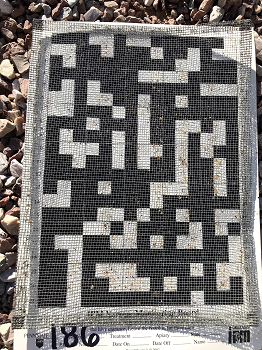
Supplies for making your own sticky board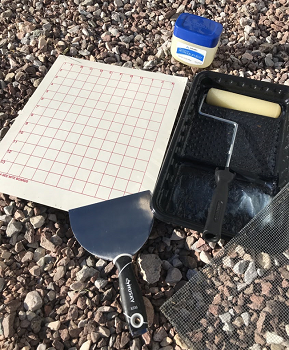
Clean Sticky board with printed grid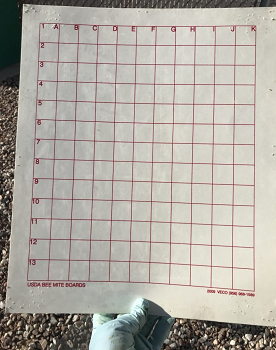
Roll a thin layer of petroleum jelly or other tacky substance onto board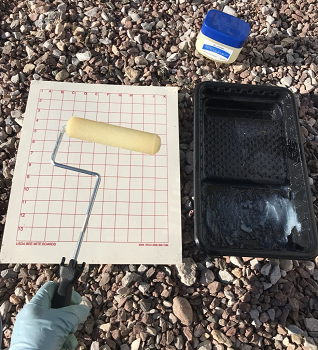
Staple the screen to sticky board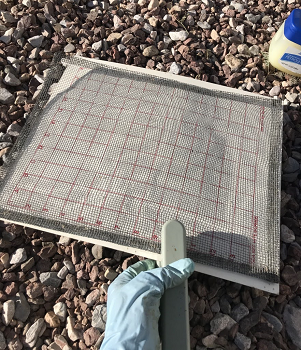
The screened sticky board is placed inside the hive under the bottom hive body and typically is left in for 3 days. The board is then removed to count the total number of mites. Mite drop per day is calculated by dividing the total number of mites by the number of days the board was in the colony.
Calculating the natural mite drop level can indicate the necessity for a miticide treatment. Typically, if 30 or more mites drop in a 24-hour period, then treatment is necessary.
Natural debris and varroa mites stuck to board
Varroa mites (reddish ovals) stuck to the board stuck to the board.png)
Sticky boards can also help determine miticide efficacy. Natural mite drop can be determined first by placing a “control” sticky board in the hive and calculating mites per day. Then, a miticide can be applied along with a new sticky board, and the difference between the treatment and control numbers will provide an indication of efficacy.
Though sticky boards can provide an indication of mite population size, following it up with a sugar shake or alcohol wash can offer additional information to help interpret sticky board numbers.
Remember though, a sticky board count or an alcohol wash or sugar shake are just single snap shots of the colony’s mite population. Frequent sampling (e.g., every 3-4 weeks when temperatures are higher than 50oF) can provide information on whether mite numbers are increasing or remaining stationary in your colonies, and improve decision making on whether to apply miticides.
Credit: All Photos taken by Mona Chambers
| << Previous 1 2 3 4 [5] 6 Next >> |
